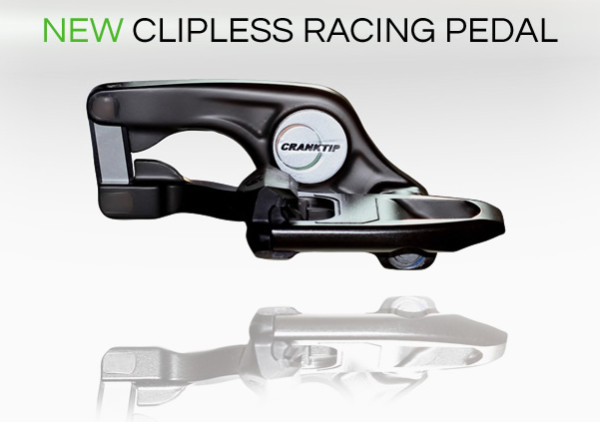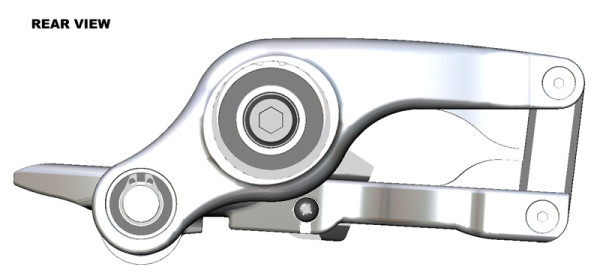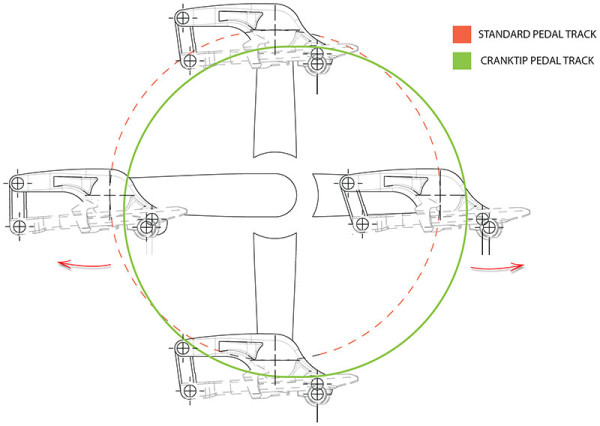Free power and less fatigue. That’s every roadie and triathlete’s dream, right? As far back as 1898, inventors have been looking toward the design of the pedal as a means of improving performance on the bike. Looking quite a bit more advanced than that first Ramsey Swinging pedal, the Crank Tip Racing Pedal promises reduced fatigue and increased power all with a simple change of your pedals.
Utilizing a dual swingarm design, the pedal is able to float laterally during rotation. It’s this back and forth movement that Crank Tip claims is responsible for a biomechanical advantage capable of reducing a rider’s heart rate by “5-10 beats.” Slide into the details next…
While they may look a little crazy, all that extra hardware simply allows the clipless portion of the pedal to float back and forth from the section attached to the crank. Think gliding chair or similar, while the fixed portion threads into your crank like a normal pedal would. The Crank Tip pedal uses what appears to be a fairly standard 3-bolt road cleat which should make clipping in and out familiar.
The main idea behind the pedals is twofold. First, the swinging action supposedly reduces leg fatigue since the pedal is able to slide back and forth. Crank Tip states that this movement lessens the feedback at the pedal which results in a smoother pedal stroke, and therefore less strain on the muscles. The other concept to the design is that when the pedal is approaching the 4 o’clock position, it results in a foot position that is 12mm lower, and 16mm further forward. Their claim is that this effectively increases the length of the crank arm gradually which provides increased leverage and torque at the key position in the pedal stroke.
Even if the pedals work exactly as claimed, there seem to be two major hurdles to contend with – weight and price. With a listed weight of 1.3 kg (1300g!), they are over 1000g heavier than something like a pair of Dura Ace PD-9000 pedals 700g (see Henk Vogels’ comment below). At $499, they are also almost double the price. However, the pedals do include a money back guarantee with the company stating they will refund all money including shipping cost if you are not fully convinced with their performance.
Thanks to Eddie for the tip!



